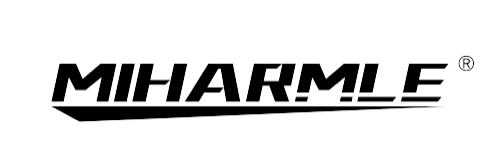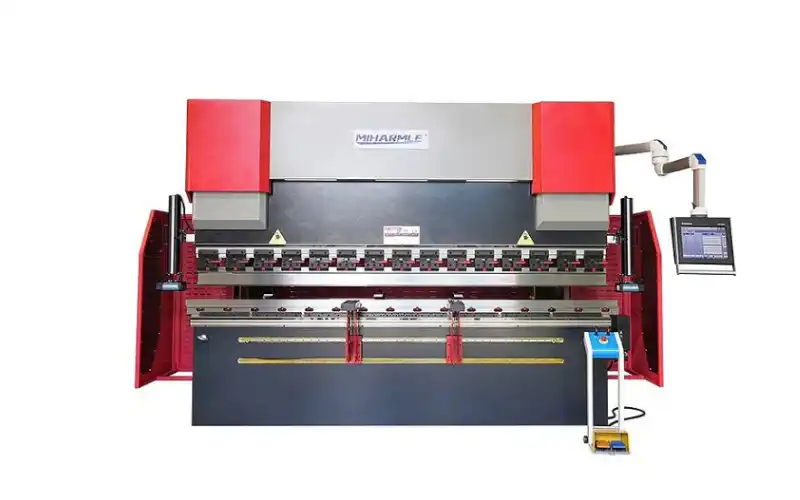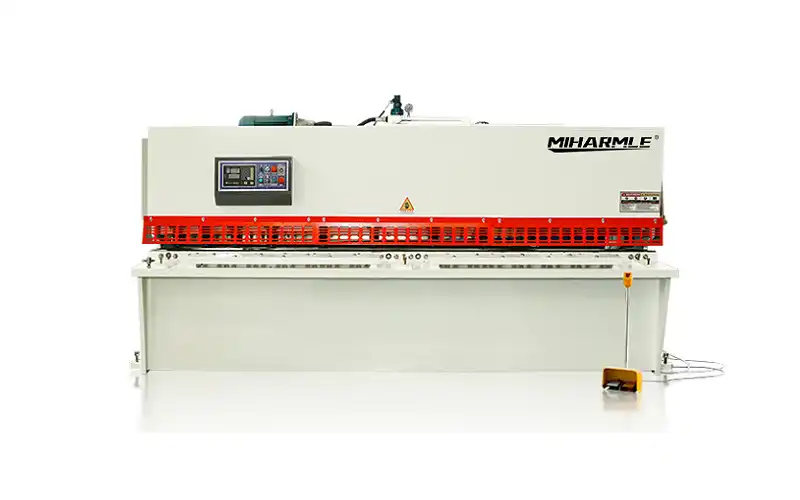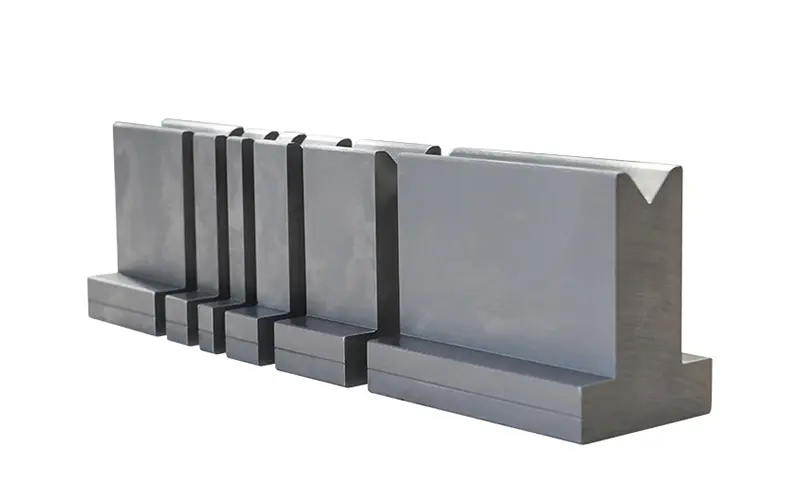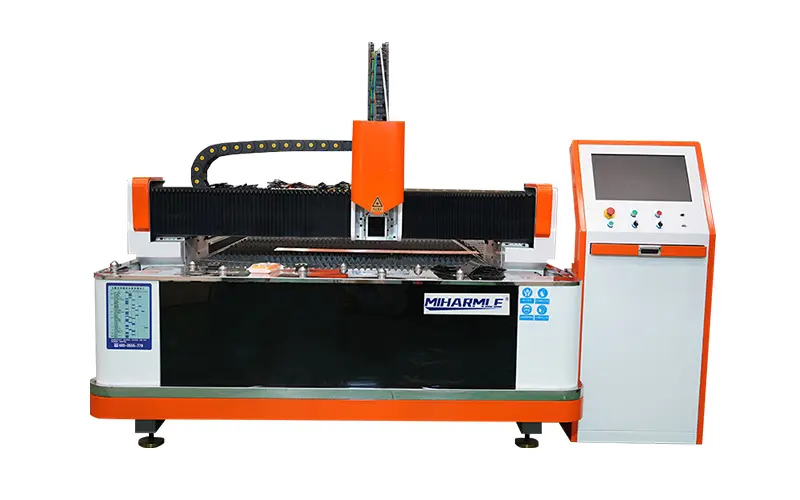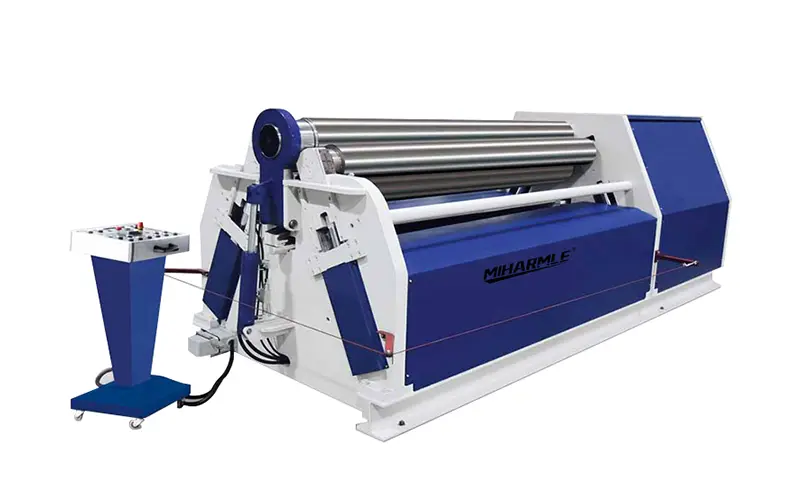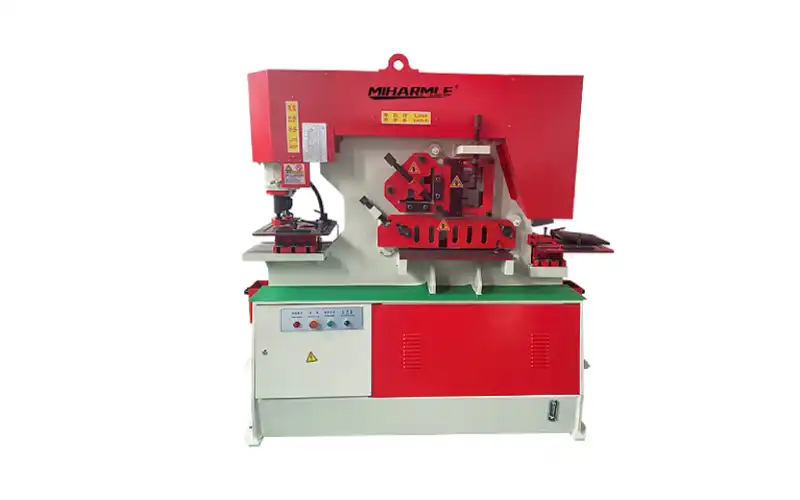
The press brake machine helps with precise bending and is extensively used in metal fabrication and bending. This machine’s precision is highly related to choosing the proper press brake tooling. Wrong tools affect the machine’s efficiency and productivity.
Sometimes, using the wrong tools in the press brake damages the machine. Thus, it is essential to understand and choose the right press brake tools. If you are new and don’t know much, don’t fret. This guide will give you all the basic knowledge about the tools.
Overview & Purpose of Press Brake Tools
Press brake tooling is a collection of swappable parts that enhances the machine’s functionality.
With these tools, machines are more versatile and functional. Such tools are not built into machines; instead, users have to buy them separately according to their needs.
Metal fabrication requires the bending of metal parts at different angles. The machine alone cannot work with metal to fulfill such requirements. The fabricators use other tools. They offer different functionality and enhance the usability of the press brake machines.
Examples of press brake tooling include radius tooling, gooseneck punch, hemming tool, and many others. Their prices vary and are readily available in the market. Choosing the proper tooling is very important.
Remember that the wrong tools can affect the machine’s performance. If you are a newbie, I won’t suggest you go shopping for tools. You’ll need extensive research about tooling.
Understanding the requirements and expected output from the tools is also critical. In the section below, I will discuss the types of tools and how you should choose them.
What Press Brake Tools Do You Need?
As I said earlier, different types of tools are used with press brakes. They help achieve different bending angles, etc. However, two tools are considered the heart of the press brake. To work, you’ll have to arrange these two. They are as follows:
- Top Tooling (Punch)
- Bottom Tooling (Die)
These two parts are mandatory. If they are in good shape, the machine will work perfectly. Otherwise, the machine won’t function at a top-performance level. Their strength and durability must be at the highest level. In the section below, I will explain these two elements of the machine that you’ll need in all conditions.
1. Punch Selection
Punches are part of a brake machine that applies force to metal. In other words, they remain at the top of the workpiece, which is why they are called top tooling. They are usually made with solid material because they apply brutal force to the metal under work.
Different sizes of punch tools are available on the market. They are different from each other in terms of their bending angles and tonnage. Usually, the standard punch tooling is most used. This is due to its high power and versatility. Here is a table showing different punch selections:
| Type | Features & Characteristics |
| Standard Punch | It is known due to its substantial tonnage. Fabricators use it to bend the heavier material with ease. |
| Acute Angle Punch | This punch tooling is useful for short-angle bending, such as 30° to 60° angle bending. |
| Narrow Punch | The fabricators use it sparingly. It is useful when all other punch tools fail to work. It has uniform thickness and helps close off square profiles. |
| Sash Punch | Its sharp, inside-bending tip helps bend the corner of the workpiece. It is also used to make door jambs and sashes. |
| Swan Neck Punch | It could be more powerful; however, it is not! The manufacturer uses it to create complex and fragile shapes in the workpiece. This punching tool is useful when a U-shape is required in the material under work. |
| Radius Top Punch | This punch has a rounded tip and works like the swan neck punch. It creates U-shaped bending. The die must be U-shaped for this punch to work. Otherwise, it won’t. |
Each of the abovementioned punches works differently. Therefore, the fabricator uses different tools for different purposes.
However, all of these are important for the press brake’s functionality. A professional fabricator must have the abovementioned tools to meet various work requirements.
2. Die Selection
The die tool is placed at the bottom of the workpiece. It bears all the force exerted by the top tooling (punch). This tool remains at the bottom, which is why it is known as bottom tooling. Like the punch, the die must be strong to bear the force exerted on it.
As I said earlier, the punch applies brutal force. If the die is not strong, it will break. The die must support and handle the punch’s force for maximum precision. Remember that the combined working of punch and die is necessary for press brake functionality. Here is a table showing different types of dies.
| Type | Features & Characteristics |
| Single V Die | As the name suggests, It has a ‘V’ shaped cavity. Fabricators use the length of the opening to eight times the material thickness. |
| Two-Way V Dies | It consists of two parallel V-shaped cavities. Compared to other die types, it offers a quick turnaround. |
| Multi V Die | It is one of the most complex yet very versatile. The manufacturer gets multiple cavities, which can be used to achieve multiple-angle bending. |
| Hemming Dies | Like an acute angle punch, this die is useful when short metal bending is required. It also helps flatten the entire flange length. |
| Channel Forming Dies | It has a U-shaped hollow and simplifies tasks smoothly. Its efficiency shines as it completes each task in just a single pass. |
There are many other tools as well. However, punches and dies are considered must-haves. These are necessary for the press brake machine to work. In the section below, we will explore other tools as well.
Types of Press Brake Tooling
As said earlier, there are different press brake tooling types. In the above section, we discuss two of the most important. However, in the section below, let’s discuss other tools that enhance the functionality of press brake machines.
- Punch & Die: Punches and dies are essential press brake tools. These are necessary for the machine to work. I’ve explained them and their types in the above section. It is important to note that these punches and dies are integral tools. Each punch and die type serves different purposes and functionality. For example, a punch exerts force. The die bears the force exerted by the punch.
- Z Bend Tooling: This tool consists of a uniquely shaped punch and die. It bends the workpiece into a Z shape. The punch applies force, and the die at the bottom provides support. It is very specialized in its functionality.
- Tool Holder: The press brake machine doesn’t need this tool. But its usability increases productivity. It is usually mounted on the press brake. Fabricators put all the tools in this tool holder so they can easily swap between tools quickly.
- Backgauge: This component is considered vital for achieving accuracy and precision. It moves in different axes and positions the workpiece in the right position. It consists of stops that can be adjusted with a computer. It helps in consistent work when multiple bends in one material are required.
- Crowning System: Crowning is vital when the bending of heavier material is required. It prevents the workbench from deforming and curving. Without this part, the workbench would deflect when the punch applied force to the workpiece. Large sheets and materials can easily be bent with this tool.
The only essential press brake tooling types are die and punch; the others are optional and used when needed.
However, their availability increases the press brake’s efficiency and versatility. Professional businesses use such additional tools to get better output from the press brake machines. Tools such as punch and dies are must-haves.
Factors to Consider When Choosing Press Brake Tooling
All the press brake tools are different. They vary in terms of their performance and reliability. Choosing the wrong tool affects efficiency and productivity. The task that requires 30 minutes will be done in one hour with the wrong tooling.
If you’re a newbie, only enter the market to buy tools after researching. You’ll have to keep multiple factors in mind. A Slight mistake can put your investment at risk. Therefore, I will mention some crucial factors. Before making a buying decision, go through each of these factors.
1. Tonnage of Machine
The first and most crucial factor to consider is tonnage. Punches of different sizes are available. They vary in terms of the force they exert on the workpiece. A high machine tonnage means the punch exerts more force on the workpiece and vice versa.
Although tonnage is usually associated with the machine, a weaker punch won’t exert a strong force. So, you should choose punches and dies tools capable of handling the machines’ higher tonnage. Such robust tools will also help you work professionally to meet clients’ requirements.
2. Type & Thickness of Material
Some materials are solid, such as stainless steel, and bending them requires extreme force. Are you going to bend or fabricate such hard materials? If yes, you’ll have to use a machine with high tonnage. So, your punch and die must be very durable.
Conversely, suppose you are about to work on soft material. In that case, going with mediocre-quality punches and dies is also acceptable. Along with type, you must count the material thickness. The thicker materials are hard to bend, so you’ll need the highest-quality punch and die.
It is also related to the level of your professionalism. If you own a business, you must be ready to bend every material. Clients can bring any material that requires bending. I recommend you choose high-quality, premium tools if you own a business.
3. Bending Angle
As I mentioned, the different punch tools achieve short to long angles. If you aim to achieve a higher bending angle, use the punch with a higher thickness and vice versa. You can also use the acute bend punch to bend the workpiece up to 30 degrees.
4. Type of Bending
It is important to note that different bending types require different tooling. Examples include air, bottom, and coin bending. Before making a buying decision, understand what kind of bending tool will be helpful for your type of bending.
Imagine you need air bending of any material. You choose tools specialized for bottom bending. This will give you regret instead of performance. Therefore, it is vital to understand your requirements. It will help you choose the tools suitable for all of your tasks.
5. Bending Shape & Radius
Other essential factors are the bending shape and radius. A V-shaped die is usually used to bend straight material. U-shaped dies are used for more complex shapes. Thus, you should choose the die that fulfills your needs and requirements.
The shape and bending radius also affect the selection. Usually, the thicker material requires a greater radius, which can be achieved by using a large die opening. If you aim to fabricate the thicker material, go with dies with a larger opening and vice versa.
6. Production Volume
Are you a professional business operator? If so, you must meet deadlines and offer a quick turnaround. Therefore, you should opt for more specialized tools for the machine. They will help you achieve the target quickly, so you won’t have to put one material through multiple passes.
Usually, smaller businesses use few tools. Those tools are not specialized for specific tasks, so they must make many passes to get the desired outfit. This is both time-consuming and less productive. You should have all the tools required by the machine.
7. Press Brake Compatibility
Compatibility is a crucial factor. Compromising on it will get you in trouble. Different brake press machines require tools of various sizes. If you don’t consider the sizes seriously, you’ll vary. They won’t fit your press brake.
Even if they fit, they will require adjustment every time you change a tool. This is both time-consuming and frustrating. Therefore, you should choose specialized tools for your type of machine. Ideally, you must read the machine’s user manual to buy the perfect tool sizes.
8. Budget & Affordability
Budget is always a significant deal-maker or breaker. Generally, having a low budget will buy you low-quality tools. On the flip side, premium tools will demand more money from you. If you have a tight budget, I suggest you buy only those few mandatory tools for your task.
Once you start the business and earn money, you can invest in more tools later. However, spending a small amount of money to buy all the tools will not be wise. It will buy you low-quality tools that won’t be durable. Tools will have substantial forces in the press brake, so strength is necessary.
Take your time with decisions. Analyze your task and requirements. Then, shortlist those tools that are necessary for an initial setup. However, if you have a handsome budget, look for balance. Don’t spend too much. Look for mid-range tools that are decently durable for your machine.
What Material is Used For Making Press Brake Tooling?
Different materials are used to make press brake tools. The lower-priced tools usually consist of cheap materials, and I don’t recommend buying those tools.
However, steel is used on a larger scale to make press brake tooling. Steel is a material used in the tool that offers excellent durability.
To be more precise, type 4 molybdenum steel is popular in making tools. This material is not too expensive and gives tools optimal strength. You should also consider tools made with type 4 molybdenum steel.
Some brands focus more on durability. They use chromium molybdenum steel, or Chromoly, to make the tools. However, such tools are premium and very expensive. The reason behind their high price is their rust resistance and strength.
The question remains: Should you consider buying tools made with chromoly? I won’t suggest that. Although such tools are premium, they are also costly. I recommend you go with tools made with type 4 molybdenum steel.
FAQs
Q1: How do you maintain and store press brake tooling?
Proper maintenance and storage are vital to prolonging the life of tools. Once you have used the tools, clean and store them. Ideally, you should also get protective coatings on your tools. All these steps will help maintain the tools.
Q2: Why is it important to choose the proper press brake tools?
The right press brake tools help in accurate, efficient, and safe bending operations. Choosing the wrong tools will increase the setup time, affect the efficacy, and damage the machine.
Q3: How does tooling material affect bending results?
The tooling material plays a critical role in the bending process. More rigid tooling materials like tool steel are suitable for bending more robust materials and vice versa.
Conclusion
Choosing the wrong press brake tooling can be regretful. It not only affects productivity but can also damage the machine itself as well.
You should carefully analyze your needs and machine type before buying. It will help you find the tools compatible with your machine and the nature of your work.
I have explained the basics of press brake tools and their selections in this article. The margin of error between the right and wrong tools is small, so be wise while buying.
I recommend consulting with professional tooling experts or suppliers if you’re still confused. They can help you understand the properties of different tools and their prices.
